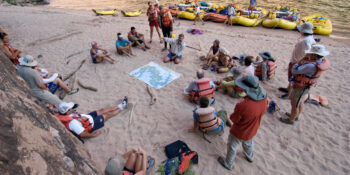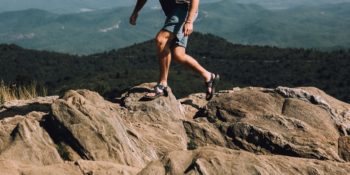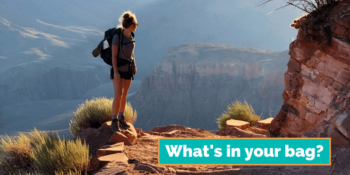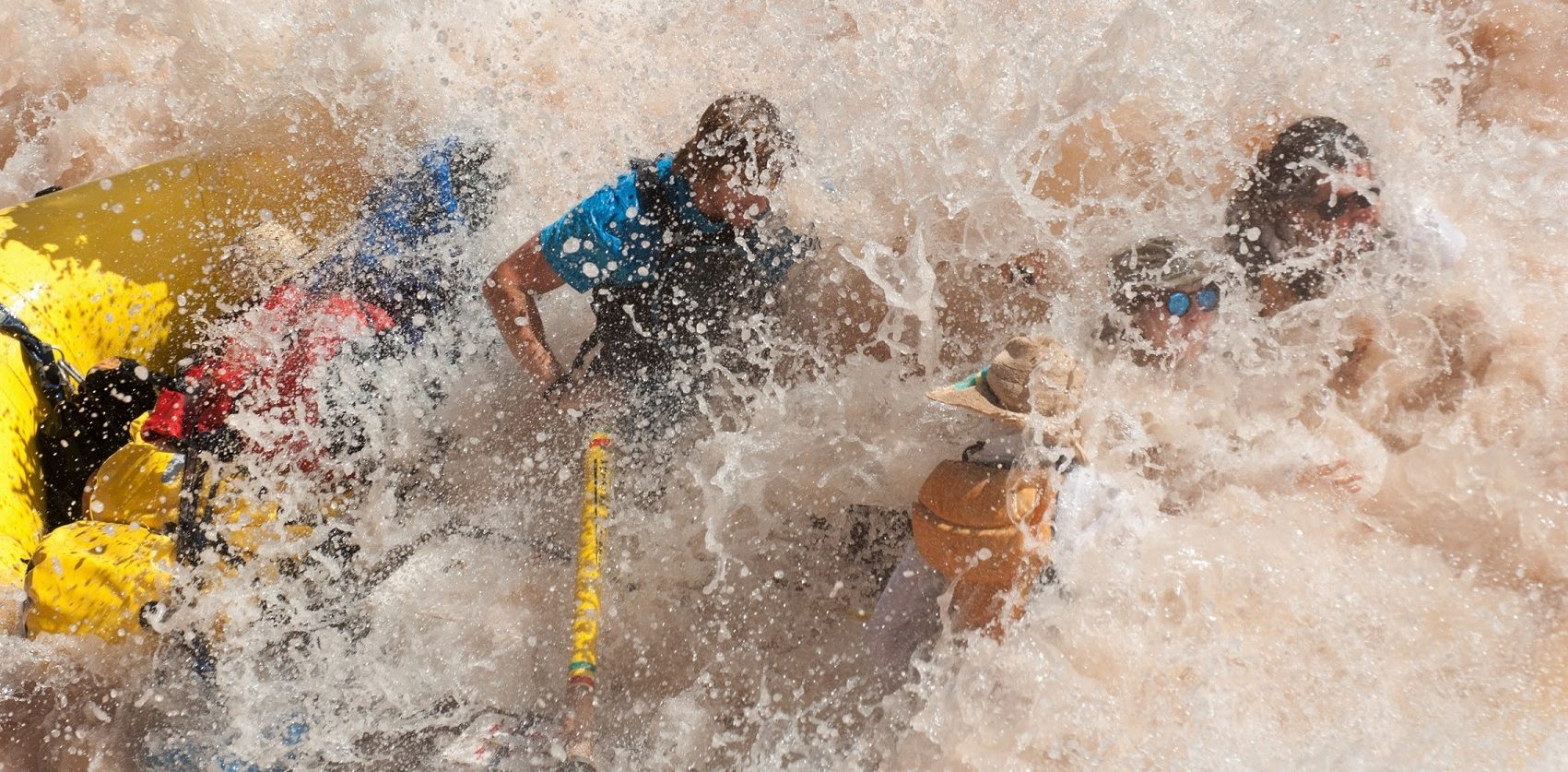
What to Wear White Water Rafting
(A Guide’s Perspective)
Let’s go rafting! But now what to wear?
Whether you’re experienced or a first timer, knowing what to wear rafting is one of the most important questions on any whitewater vacation. After the excitement of booking comes the “what to bring rafting?” dilemma. Whitewater outfitters and companies usually include a rafting trip packing list, often naming mandatory and optional items. However, what is it that you really need on my river trip?!
Relax & Pack
We are here to ease your qualms, and make your gear list a bit more straightforward. The bottom line being less is more, and a few high quality items mixed in with some stuff you don’t mind never seeing again after your rafting trip will probably do the trick.
All of us, including guides have made plenty of packing mistakes, and still will. Regardless of what’s in your bag, you will have an awesome time because you’re on the river!
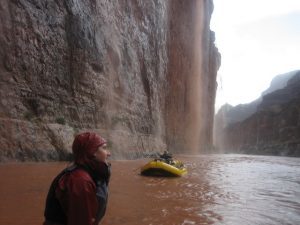
Rafting Wear 101
Here are our top guidelines to be properly outfitted for your trips. Most points apply to both what to wear on one-day and multi-day rafting trips. There are a few suggestions that will obviously be only for multi-day trips. Check with your outfitter, some gear may be provided. Also, adjust these tips for the length of multi-day trips and the amount of whitewater rapids you will be encountering. You can usually do “laundry” on the river if needed, but make sure to ask your guides about where soap should go, whether in or out of the river, as that varies in different environments!
Quick Dry Clothing for Rafting safety and comfort
Cotton vs. Synthetics + Wool
- It’s easier to cool down than it is to warm up. This concept also comes into safety considerations. Hypothermia and heat exhaustion are both serious issues that can arise on whitewater rafting trips.
- Cotton keeps you cool, synthetics dry quicker and tend to be warmer. Sometimes you want a cotton shirt and sarong to keep you wet for body temperature regulation. On the flip side, cotton can be detrimental on a cooler day. Pack a warm fleece jacket or a light puffy jacket for chilly mornings and nights.
- Ideal quick drying synthetic fabrics to keep you warm include such as polyester, wool (not synthetic but warm!), capilene or rayon. Long underwear is also necessary. I will say this: cotton at the end of the day is amazing and dry underwear is crucial for comfort at night. A pair of lightweight pants are also nice for evenings and mornings in camp.
What to Wear Rafting on Cold Days
- Dressing in layers allows you o peel things off or add on as needed during the day. Keep a warm synthetic layer and raincoat in your day dry bag with other essential items. A warm hat is small, easy to carry and can dramatically increase warmth. Check out our article on rain gear for rafting.
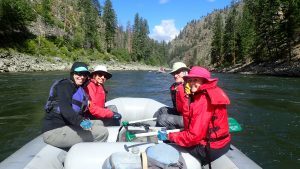
- Protect yourself from the weather includes the sun even on cold days. Especially on desert trips like rafting the Grand Canyon. A “buff” or bandanna is another great option, especially helpful now during COVID-19 days.
- Ideally you want comfort over anything else. Leave your ego at home. It seems that many rafters think it’s a good idea to wear swimwear under their clothing, and although that may be a good idea, just make sure it is comfortable for the entire day. Also, consider functionality for bathroom stops.
Clothing for Hot and Sunny Days

- Buy a good sun hoodie or quick dry rafting shirt. You’ll see many guides living their summer days in sun hoodies and potentially some UPF tights underneath a good pair of board or water shorts.
- Sunglasses. Polarized sunglasses are worth the extra money, and you will wear them again. You will be able to see more on the water, and they can prevent headaches. Make sure you have a solid attachment for your shades in case you fall out of the raft. We recommend “chums” or “croakies.”
- Rafting in a hat is nice. Sometimes people show up with huge sun hats, or something more along what river guides call the “beekeeper look,” (think khaki colored with all sorts of shade and neck flaps). At a minimum bring a baseball style hat. Also know that a rapid may blow it into the river and you may never see it again. So don’t bring your favorite one, bring a back-up and it’s better if your hat has a retention strap.
- While it may not seem necessary in the heat of the summer, always bring a warm beanie! Heat escapes our heads quickly, and this is a small item that can dramatically improve your comfort. Look for synthetics or merino wool.
- **A note on helmets: if you are required to wear a helmet while running rapids, a baseball cap typically fits well under most helmets giving some sun protection.
Read more about sun protection options.
Water Bottles
- Water is life (and important). So invest in a good stainless steel or insulated water bottle. You will use this item again when traveling and maybe even help you drink more water everyday at home. Hydration is critical even on chilly rafting trips, but also make sure you eat those salty snacks guides will offer you during the day!
Rafting Foot Wear
Protect your feet. If your feet are unhappy, you will be unhappy. Learn more in our post on selecting footwear for rafting.
- There are tons of brands, but we recommend Chaco, Astral, or an old pair of running shoes to wear when rafting.
- Once at camp, you will want a change of shoes. Options include hiking shoes, crocs, or flip flops. Dry socks and shoes make the end of the day in camp much finer.
- Bring a pair of sturdy flip flops. They are flat and easy to pack and you will wear them at some point.
UNPLUG!
- Leave the tech stuff at home. While dry bags work well, sometimes water gets in them when rafting through big rapids. Only bring electrical stuff you need and aren’t worried about getting wet.
- This includes phones unless it’s your only camera, be sure to put it in airplane mode so the batteries will last longer. Be careful with your Kindle. Leave your valuables or special items at home.
Camp Clothing and Gear

- Rafting dress-up, head to the thrift store. It’s usually a fun outing, and you may find something to improve your river fashion wear. Whether it’s your run of the mill Hawaiian shirt, or something more bold like a party dress or costume, get ready to rock it. Pick up a funky long sleeve river shirt or two for $5. We river folk love to have some solid style out there. You may even find some quick dry items such as shorts or a total steal of a great brand that has barely been used.
Toiletries
- Bring a lightweight bag to separate your toiletries.
- Sunscreen is obviously important to wear rafting. Avoid brining aerosol sprays — they end up going more into the air than on your skin, often smell strongly and are poor for the environment (and irritate your fellow river runners). Check out our article on sunscreens. Or just buy Badger’s sunscreen cream or their paste.

- Widdle your toiletries down to the essentials (you don’t need every face serum you may use at home) and buy travel sized stuff.
- Lotion is important. The wet/dry cycle of rafting on your skin causes many people problems. I highly recommend a salve for dry skin such as Super Salve (this is great to put on your hands at feet before bed).
- Ladies, we have a whole post about feminine hygiene for rafting.
Headlamps, Sarongs, & More Bags:
- Bring a headlamp and extra batteries. This is a safety precaution for walking around camp at night or early morning. Get a headlamp that has a red or green light option so you will not attract as many moths and avoid blinding yourself and your friends with bright white light.
- Wear a sarong! It’s lightweight. It’s a changing room. It’s sun protection on the raft. It’s a skirt, a scarf, a blanket, a pillow for your nap at lunch.
- Packing items into smaller bags makes things easier to find. Rafting guides often joke that dry bags are black holes. The item you’re looking to wear on day three is always on the bottom. So if you can sort camp clothes and river clothes for example, it may save you a headache.
Worst Gear for Rafting Trips
A few items need to be left at home for the comfort of you and everyone else on the trip.
- Bluetooth speakers, inhibit the groups ability to enjoy the sounds of wilderness. If you need music bring some earbuds.
- Flimsy plastic ponchos don’t keep you dry when new and they fall apart quickly.
- Spray on Sunscreen gives causes cancer when inhaled by rats why subject your rafting friends to such abuse. It also can make a mess in your dry bag.
- Cell phones do not work on the river and could easily get damaged. Only bring it if it is your camera, make sure to put it in airplane mode, turn off blue tooth and GPS to help your battery last longer.
One final piece of advice…
- Don’t pee in your shorts. It’s not worth it. This does connect to packing because if you do this, your shorts will stink and you will likely get a “rafter’s butt” rash. Listen to your guides, and remember “privacy is given” on the river!
Concluding Thoughts on What to Pack and Wear Rafting
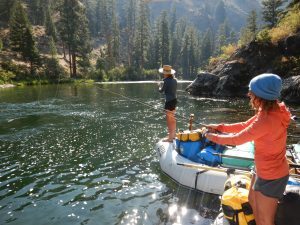
With this list of tips about what to wear rafting, I probably forgot something. You probably will too. That’s okay. A lot of hardships, especially when we are outside of our comfort zone have to do with our attitudes, outlooks and reactions. If you realize on day one you forgot something, don’t beat yourself up! Make a new friend, ask a guide and I’m willing to bet it will work out. And when in doubt, go sit by the river and everything will be okay.
Looking for information about what to wear check out our recommended gear page. Or read our overview of Grand Canyon rafting trips.
Pack & Plan Your Rafting Adventure
Articles about packing for your Grand Canyon rafting tour. See All Our Gear Posts
Our Favorite Books for Grand Canyon Rafting Trips
Here are some of our favorite Grand Canyon rafting books for those interested rafting the Colorado River within Grand Canyon. This post just scratches the surface of the best writing on the Colorado River through Grand Canyon.
Keep Reading > Our Favorite Books for Grand Canyon Rafting Trips
Best Shoes and Sandals for Rafting, Camping & Hiking Trips
Best Shoes and Sandals Grand Canyon Rafting & Hiking Trips We receive many questions about the best footwear for rafting trips. The overwhelming number of rafting shoes and sandals on…
Keep Reading > Best Shoes and Sandals for Rafting, Camping & Hiking Trips
Six Items For Hiking Grand Canyon
Six Items For Hiking Grand Canyon A question we receive almost on a daily basis is what to put in your backpack when hiking into a Grand Canyon rafting trip.…


